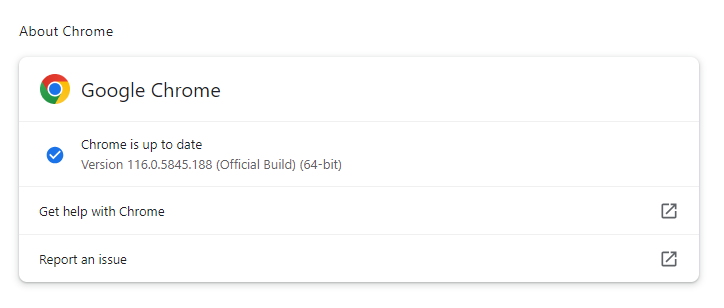Google has released an update for Chrome Desktop which includes one critical security fix. There is an active exploit for the patched vulnerability, according to Google, which means cybercriminals are aware of the vulnerability and are using it.
If you’re a Chrome user on Windows, Mac, or Linux, you should update as soon as possible.
The easiest way to update Chrome is to allow it to update automatically, which basically uses the same method as outlined below but does not require your attention. But you can end up lagging behind if you never close the browser or if something goes wrong—such as an extension stopping you from updating the browser.
So, it doesn’t hurt to check now and then. And now would be a good time, given the severity of the vulnerabilities in this batch. My preferred method is to have Chrome open the page chrome://settings/help which you can also find by clicking Settings > About Chrome.
If there is an update available, Chrome will notify you and start downloading it. Then all you have to do is relaunch the browser in order for the update to complete.

After the update, the version should be 116.0.5845.187 for Mac and Linux, and 116.0.5845.187/.188 for Windows, or later.
The vulnerability
Google never gives out a lot of information about vulnerabilities, for obvious reasons. Access to bug details and links may be kept restricted until a majority of users are updated with a fix. However, from the update page we can learn a few things.
The Common Vulnerabilities and Exposures (CVE) database lists publicly disclosed computer security flaws. The zero-day patched in this update is listed as:
CVE-2023-4863: a heap buffer overflow in WebP, also described as a vulnerability that resides in the WebP image format which could lead to arbitrary code execution or a crash.
A buffer overflow is a type of software vulnerability that exists when an area of memory within a software application reaches its address boundary and writes into an adjacent memory region. In software exploit code, two common areas that are targeted for overflows are the stack and the heap.
The heap is an area of memory made available use by the program. The program can request blocks of memory for its use within the heap. In order to allocate a block of some size, the program makes an explicit request by calling the heap allocation operation.
Credit for reporting the vulnerability was given to Apple Security Engineering and Architecture (SEAR) and The Citizen Lab at The University of Torontoʼs Munk School on 2023-09-06. The fact that this happens to coincide with a report by CitizenLab about two Apple vulnerabilities that used by the NSO group to drop the Pegasus spyware, seems too much to be a coincidence.
Add the fact that both Apple CVE-2023-41064 and Chrome CVE-2023-4863 are based on image processing and we feel comfortable saying that these two vulnerabilities are very, very likely to be related.
We don’t just report on threats—we remove them
Cybersecurity risks should never spread beyond a headline. Keep threats off your devices by downloading Malwarebytes today.











